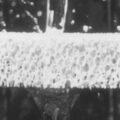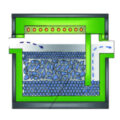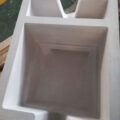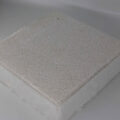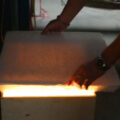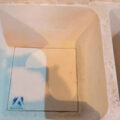The filtration of primary aluminum is to allow liquid aluminum to pass through a filter composed of neutral or active materials, so that the inclusions in the melt are mechanically isolated, or chemically react with the active materials to separate the melt from the slag. There are many filtering methods for aluminum and aluminum alloys, and the following are commonly used:
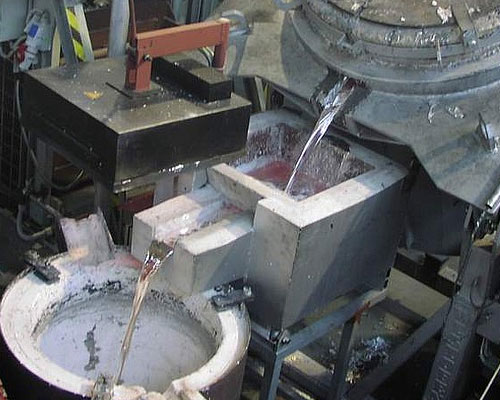
Flux filtration method: Flux filtration is carried out in the casting process of primary aluminum or alloy. The melt flow first passes through the flux and then enters the crystallization or mold to achieve the purpose of removing the oxide film or other non-metallic inclusions.
Mesh filter: A mesh made of glass fiber cloth or heat-resistant metal wire is commonly used, which is effective for separating large inclusions. The method is to use several layers of high-temperature resistant glass cloth and place them in the middle of the launder through which the aluminum liquid flows. In order to increase the flow, the glass cloth can be made into a bag and placed in the middle of the flow trough, but it is necessary to prevent the aluminum flow from directly impacting the glass cloth to prevent piercing. The glass cloth is best placed in a place where the liquid flow is stable, and generally should be placed near the molten aluminum that will flow into the mold or crystallizer.
Pore tube filtration: In recent years, aluminum and aluminum alloy castings have adopted a large number of microporous tubes for filtration. This filter is made of corundum sand, glass powder, and an appropriate amount of peach gum, mixed and pressed into a tube, dried at low temperature, and sintered at high temperature at 1300-1400 ℃. When in use, the number of microporous tubes is determined according to the liquid flow required by the ingot. Using this filtering method has a good effect on eliminating slag inclusions in the oxide film inside the melt.
Ceramic foam filter filtration: The principle of ceramic foam filtration and purification is the same as that of ceramic tube filtration. They are both deep filtration mechanisms and have a higher porosity (80%-90%) than ceramic tubes. Therefore, they have large flow capacity and are suitable for filtration in continuous casting and continuous rolling production. Purify. Filtering with foam ceramic filter plates is currently the most effective way to remove inclusions in aluminum melt. The metal filter screen and fiber cloth filter used by low-end customers can only remove the large inclusions in the aluminum alloy melt, but the inclusions below the micron level cannot be removed and the metal filter screen will also pollute the aluminum alloy. The use of foam ceramic filter plates can filter out fine inclusions and significantly improve the mechanical properties and appearance quality of the product.

